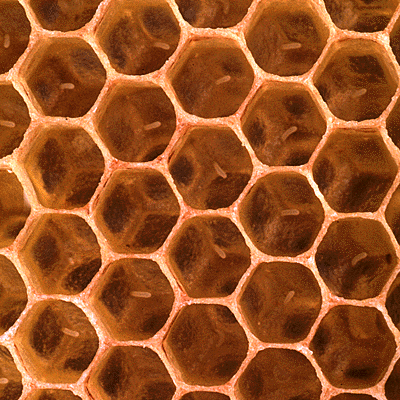Honeycomb
A honeycomb is a mass of hexagonal wax cells built by honey bees in their nests to contain their larvae and stores of honey and pollen.Beekeepers may remove the entire honeycomb to harvest honey. Honey bees consume about 8.4 lbs (4 kg) of honey to secrete 1 lb (500 g) of wax,[1] so it makes economic sense to return the wax to the hive after harvesting the honey, commonly called "pulling honey" or "robbing the bees" by beekeepers.[citation needed] The structure of the comb may be left basically intact when honey is extracted from it by uncapping and spinning in a centrifugal machine—the honey extractor. If the honeycomb is too worn out, the wax can be reused in a number of ways, including making sheets of comb foundation with hexagonal pattern. Such foundation sheets allow the bees to build the comb with less effort, and the hexagonal pattern of worker-sized cell bases discourages the bees from building the larger drone cells.
"Artificial honeycomb" plate where bees have already completed some cellsFresh, new comb is sometimes sold and used intact as comb honey, especially if the honey is being spread on bread rather than used in cooking or to sweeten tea.
"Artificial honeycomb" plate where bees have already completed some cellsFresh, new comb is sometimes sold and used intact as comb honey, especially if the honey is being spread on bread rather than used in cooking or to sweeten tea.
Honeycomb
Honeycomb








No comments:
Post a Comment